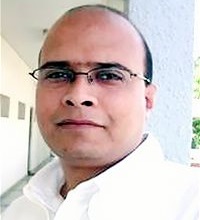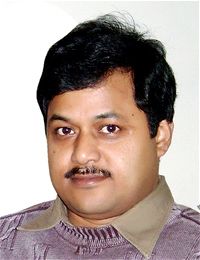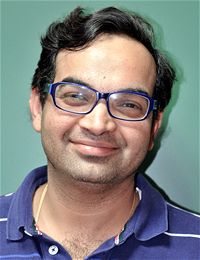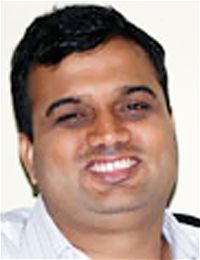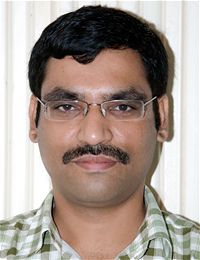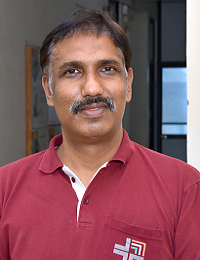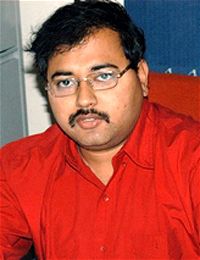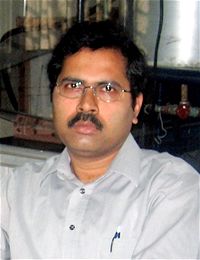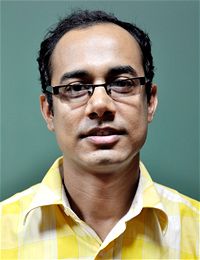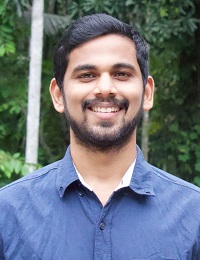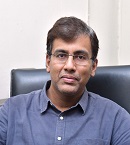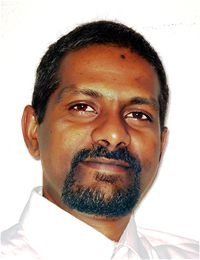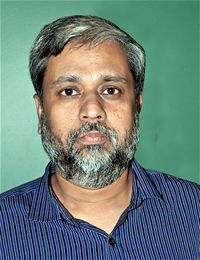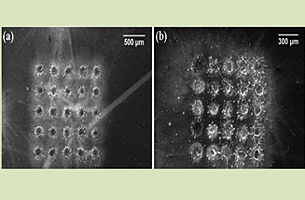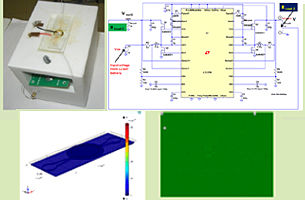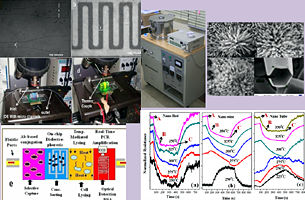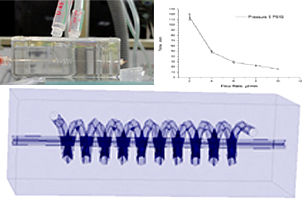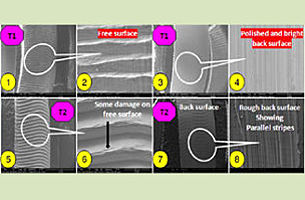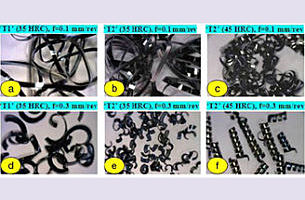Welcome Message

Welcome to the Department of Mechanical Engineering at IIT Kanpur. We started our journey in the year of 1960. Over the last six decades, we have grown our expertise and competence in the core Mechanical Engineering curriculum and research....
- Read More
-Prof. Ashish Dutta
Head, Department of Mechanical Engineering
Featured Faculty

Chromium Etching by Laser
The major research focus is on nano/ meso scale patterning in metals and polymers for developing different surfaces which have different wettabilities, adhesion and friction coefficients for tribological applications. The patterning is performed by using Excimer laser machining. The patterns can also be grown on surfaces by using chemical vapor deposition processes. Patterning thin chromium films with laser has been explored for a variety of mask fabrication processes for lithography applications. The lasing process is further optimized by exploring COMSOL models of light matter interaction.
Research Areas
Microtexturing on metals, polymers and semiconducting surfaces through Laser processes and using CVD growth
Research Laboratories:
Manufacturing Science Laboratory
Tribology and Surface Engineering Lab
Associated Faculty
J. Ramkumar, PhD (IIT Madras): Micro / Nano-Fabrication and finishing, Nano Composites and Tribology
Ongoing Sponsored Projects
Completed Projects

A Passive Vibration micro-damper
The resarchers in MEMS fabrication area develop microscale technologies for applications in the physical and biomedical sciences. Focus areas in the group include MEMS fabrication for microfluidics and integrated micro- and nano-sensing, fabrication and testing of an integrated biochip.
Research Areas
MEMS fabrication for microfluidics and integrated micro/ nano sensing, fabrication and testing of an integrated biochip, microscale flow initiation and behavior, polymeric DNA microchip, nanofabricated gas sensors, carbon nanotubes, nanopolymers
Research Laboratories:
Micro systems Fabrication Laboratory
Associated Faculty
S. Bhattacharya, PhD (University of Missouri, Columbia): Bio MEMS, Lab on Chip, Nano Technology, Microsystems Fabrication and MicroFluids
Niraj Sinha, PhD (University of Waterloo, Canada): Nanotechnology, Bioengineering, Manufacturing systems

Computational Metal Forming
Experimental investigations are performed on the effect of different single and multiple layers of materials on cemented carbide inserts and optimum conditions of machining are evolved for high level of surface finish. The impact of different coatings on cutting tool surfaces and their failure mode while machining metals is being studied. Also, the feasibility of forming processes to manufacture different parts across macro and micro-scales are being evaluated using computational technique.
Research Areas
- Utilization of coated tool inserts for optimized machining
- Development of in-house, large deformation, damage-coupled, elasto-plastic FEM code (both Eulerian and updated Lagrangian formulations with contact module)
- Prediction of fracture using continuum damage mechanics in drawing, extrusion, rolling, forging, deep drawing, hydroforming and equal channel angular pressing (ECAP)
- Optimization of die shape in hot/cold extrusion
- Estimation of residual stresses in rolling and forging
- Modeling of multi-pass rolling by including anisotropy
- Prediction of Earing and optimization of initial blank shape for the prevention of earing
- Prediction of flange wrinkling in deep drawing using a bifurcation criterion
Research Laboratories:
Manufacturing Science Laboratory
Associated Faculty
S. K. Choudhury, PhD (PLPF, Moscow): Vibration Control of Machine Tools, Adaptive Control System, Metal Cutting, Hydraulic Control, Unconventional Machining
P. M. Dixit, PhD (Minnesota): Metal Forming, Ductile Fracture, Elasto-plastic Impact / Contact Problems and Finite Element Method

Advanced processes for Micro- and Nano-manufacturing
In this area, various nano-finishing processes and strategies like Magentorhelogical Abrasive flow finishing (MRAFF) is utilized to develop surface finishes less than 100nm which are heavily utilized for prosthetics, implants, nuclear reactors, micro-mirrors etc. The magnetorheological fluids demonstrate change in apparent viscosity under external magnetic fields. In this process, a viscous slurry made of Carbonyl Iron Particle and the abrasive grains are passed through external magnetic fields resulting in their local increase in viscosity. This leads to positive pressure of the abrasive particles on the metal pipe interiors through which the slurry is passed.
Research Areas
Micromachining of channels using ECDM processes, nanofinishing using MRAFF, and MAF processes
Research Laboratories:
Manufacturing Science Laboratory
Associated Faculty
V. K. Jain, PhD (Roorkee): Advanced Machining Processes, Accelerated Cutting, CAM Machining of Advanced Engineering Materials
Highlights
- List of candidates from CFTI selected for provisional admission for PhD program in Mechanical Engineering for the session 2025-26-I.New
- Department of Mechanical Engineering, IIT Kanpur Presents 2nd Mechanical Sciences Young Investigators Meet MSYIM 2025 17-19 March 2025. Visit the website for more details: MSYIM 2025
- Guidelines for the Application of Institute Post Doctoral Fellows
- Applications invited for direct PhD students for the semester 2025-26-I. Last date of application February 20, 2025
- List of Selected candidates: Winter PG Admission 2024
- Candidates Shortlisted for Interview: Winter Admission PhD Programme 2024
- Dates for PhD winter admission 2024 written exam and interviews: November 27-28, 2024
- Reporting date of all new PG students: Jul 18 - 19, 2024
- Departmental Orientation of new PG Students: Jul 20, 2024, 2:30 PM onward, Venue: L16
- PhD admission (Round 2): Application form available here. Last date of application: 4th July 2024. Online written test: 7th July, 2024, Online/Offline Interviews: 10th July, 2024
- M.Tech. Admission (through COAP): Cutoff score, Vacancy and fee paid data
- Selected candidates for provisional admission in PhD programme
- Selected and WL candidates for MS(R) admission (Institute-sponsored category) Round 1
- Rolling advertisement for faculty recruitment






